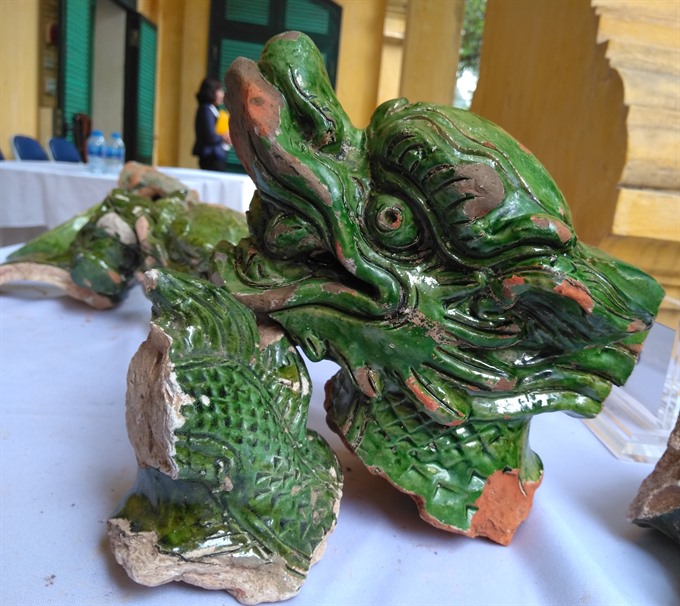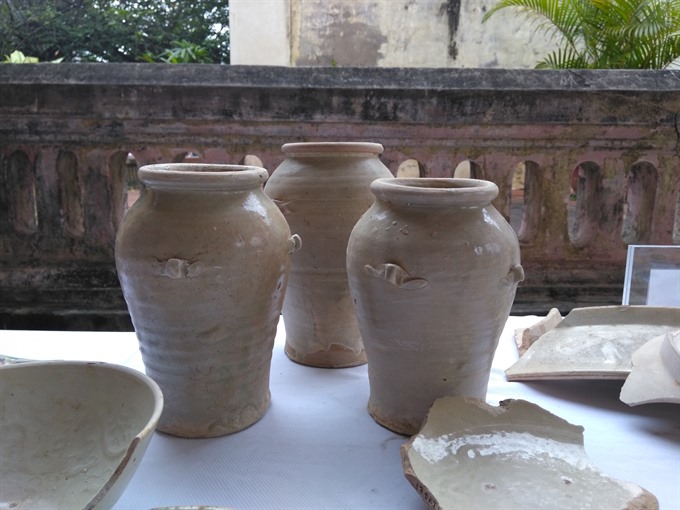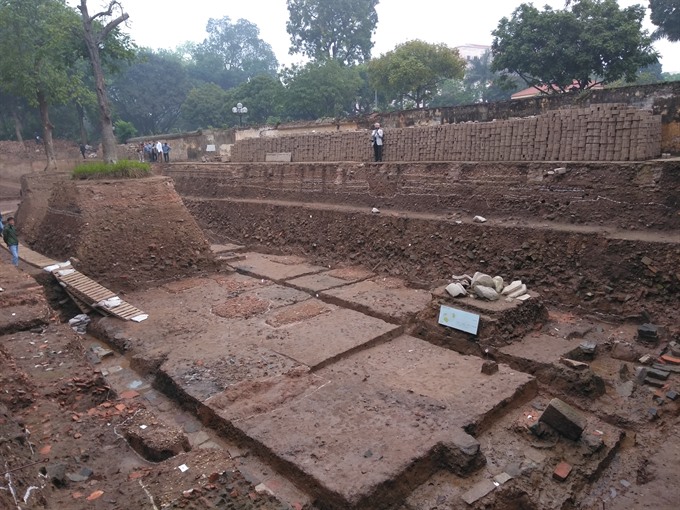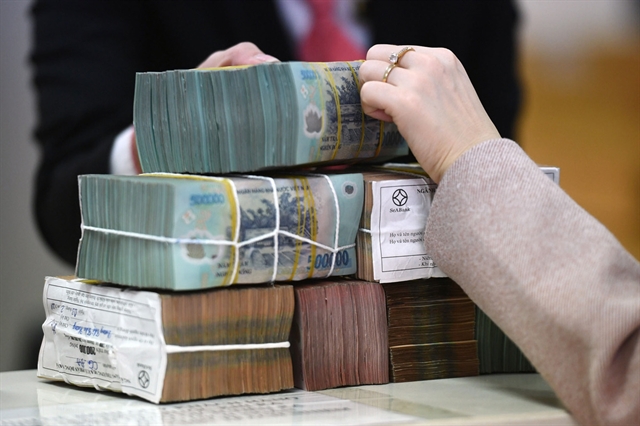 Life & Style
Life & Style

 |
| Pieces of dragon-shaped tiles found at the excavation of Kính Thiên Palace. — VNS Photo Minh Thu |
By Minh Thu
HÀ NỘI — Archaeologist Tống Trung Tín’s excitement knew no bounds when he found dragon-shaped tiles in the debris from the excavation of Kính Thiên Palace.
The palace is at the heart of the Thăng Long Royal Citadel in Hà Nội, Viet Nam’s world heritage.
Tín and fellow archaeologists published an annual report yesterday, in which they announced the new discoveries of the archaeological site.
The highlight of the excavation is many dragon-shaped tiles that were used in the roofs of royal palaces during the Early Lê dynasty (980-1009).
“The tubular tiles are shaped like dragons with yellow and green enamel,” said Tín.
“Each line of the tiles is shaped like a dragon with the body lying along the roof. The line ends with a dragon tail and starts with a dragon head carved sophisticatedly. The dragon with five-claw legs was used on the roof of the king’s palace, while the one with four-claw legs was used on the roof of the crown prince’s palace. The pieces we found are exactly how they have been described in history,” Tín said.
Even after many centuries, the colour of the enamel is still shiny and brilliant. “I can imagine how splendid and luxurious the palaces were. I have read about the royal palaces in historical books, but it’s interesting to see some parts of them with my own eyes,” he said.
Spread over an area of 1,000sq.m site, the archaeologists found different evidences of culture and architecture, dating back to different dynasties, including Early Lê, Lý, Trần and Nguyễn dynasties (from the 10th-20th centuries).
“Each layer reflects the unique culture and architecture of a dynasty. We found many pieces of ceramic and pottery of the Mạc Dynasty (which ruled the whole of Đại Việt between 1527 and 1533 and the northern part of the country from 1533 until 1592),” Tín said. “However, we did not find any trace of Mạc architecture. This is true to what the history books claim: that kings of the Mạc Dynasty did not build new palaces and just repaired the available palaces of the previous dynasties.”
At the conference, experts suggested that the excavation site should be widened to give a panoramic view of Kính Thiên Palace as well as an insight into the architectural works of different dynasties in the past.
“Findings of the excavation last year demonstrated the variety and complexity of the relics within the main area of the palace as well as contributed to clarifying the enormous value of the Thăng Long Citadel,” said Bùi Minh Trí, director of the Centre for Royal Citadel Studies.
“I suggest the archaeologists draw a map of the whole site to facilitate further research. The map cannot be accurate because we have not dug out the whole site yet, but it can certainly help people get a glimpse of the relics,” Trí said.
The excavation had been conducted by the Thăng Long-Hà Nội Heritage Preservation Centre and the Việt Nam Institute of Archaeology on a total area of nearly 1,000sq.m in the main area of Kính Thiên Palace since 2012. It is a small area compared to the scale of the royal citadel, Trí said.
“Working on a small site cannot reflect the comprehensive and exact value and scale of royal architecture. In my opinion, we should target to introduce the value of archaeological research to the public, not only something discussed between scientists,” he added.
According to Lưu Trần Tiêu, chairman of the National Council on Cultural Heritage, in hundreds of hectares of land of the Thăng Long Citadel, thousands of artefacts, dating from the pre-Thăng Long period (3rd-10th centuries) to Thăng Long-Hà Nội period (11th-early 20th centuries) have been found during the excavation.
“We also found a great number of artefacts in the trench excavated last year. Preliminary results show bricks and tiles dating back to the eighth and ninth centuries, bricks and tiles with dragons, phoenixes, lotus decoration and ceramics during the Lý Dynasty (11th-12th centuries) and the Trần Dynasty (13th-14th centuries) as well as an iron canon of the Nguyễn Dynasty (1802-1945).
“Along with architectural vestiges, the artefacts reflect various historical and cultural aspects of Thăng Long-Hà Nội,” Tiêu said. — VNS
 |
| Three intact vases dating from Mạc Dynasty were found at the site. — VNS Photo Minh Thu |
 |
| The area of 1,000sq.m is excavated to discover different cultural layers of Kính Thiên Palace. — VNS Photo Minh Thu |




